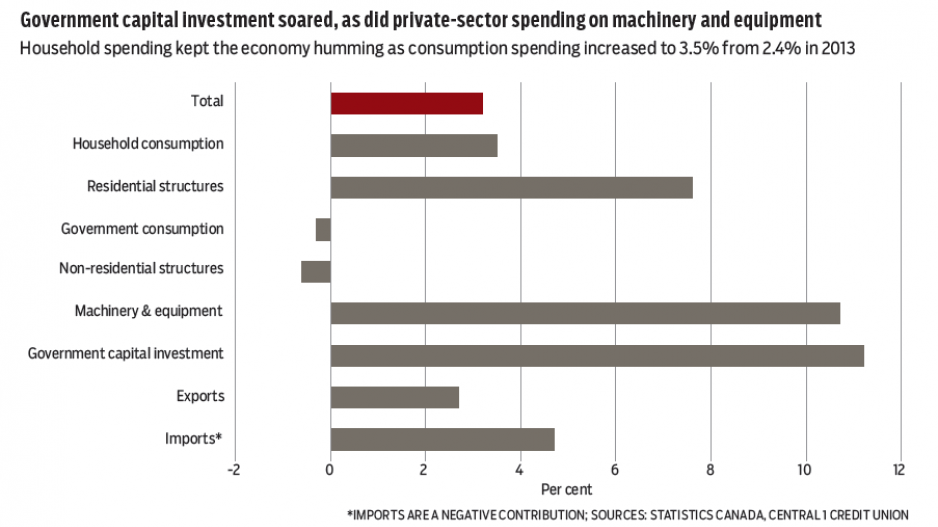Good things come to those who wait. At least, that’s what we tell ourselves when it comes to the long lag time for official data on provincial annual economic growth. Statistics Canada released its estimates for 2014 economic expeAnditure and income accounts estimates for provincial economies this week, and the numbers came in much stronger than earlier industry-based estimates suggested.
B.C. economic growth compared favourably with the national performance last year, expanding by a solid 3.2%, exceeding the Canadian average of 2.5% and marking the second-highest rate among provinces, trailing only Alberta. This compared with a 2.1% expansion in 2013 and marked the strongest growth pace since 2006.
In contrast to a trade-related uplift the prior year, domestic demand drove annual growth. In particular, household spending kept the economy humming with acceleration in consumption spending to 3.5% from 2.4% in 2013. Gains were strong for durable and semi-durable goods as low interest rates flowed through the economy via increased vehicle sales (7%) and housing demand. The latter lifted consumption of furniture and other housing-related goods (6.7%).
B.C.’s housing sector picked up considerable steam last year, gearing off higher housing sales and starts. Following a mild contraction, residential investment spending surged 7.6%.
Meanwhile, private non-residential investment posted a mild rebound following a sharp 2013 downturn. Businesses ramped up machinery and equipment spending (10.7%) despite investing slightly less in building construction. The higher Canadian dollar during 2014, which averaged closer to parity, likely spurred productivity investments. Inventory investment also climbed from 2013.
With exports adding to growth, slower trade-oriented growth reflected a sharp gain in imports, which climbed 4.7% on a 6.3% increase in imports from other countries. While this cut into headline growth, a significant portion of imports improved growth through the aforementioned increase in machinery and equipment spending. That said, higher imports were also captured in increased consumption.
On the income side, the economy drove moderate nominal gains in 2014. Income-based GDP climbed 4.7% from 2013. Corporations posted a sharp gain in profits of 8.4%, after two years of contraction.
Stronger-than-expected growth from 2014 and a relatively robust flow of economic indicators this year require a necessary upward adjustment to our economic outlook. Real GDP in B.C. is forecast to climb by 3.1% this year, with growth holding steady in 2016 at 3.3%. •
Bryan Yu is senior economist at Central 1 Credit Union.




